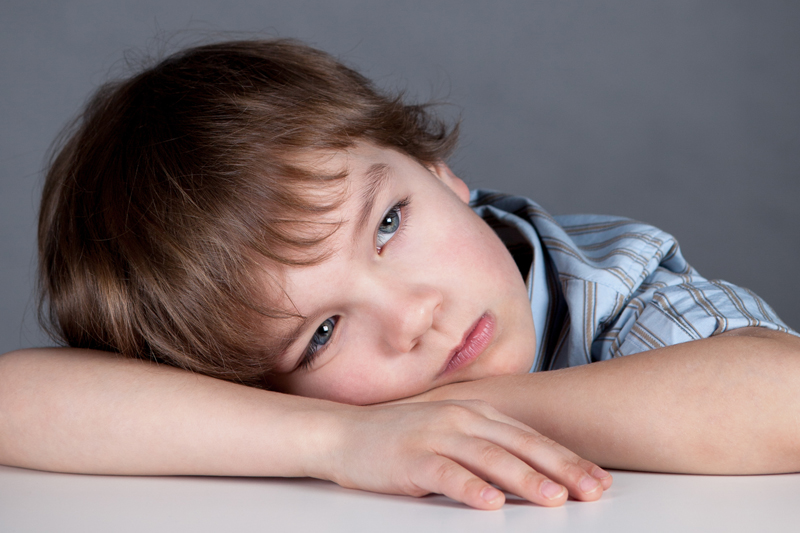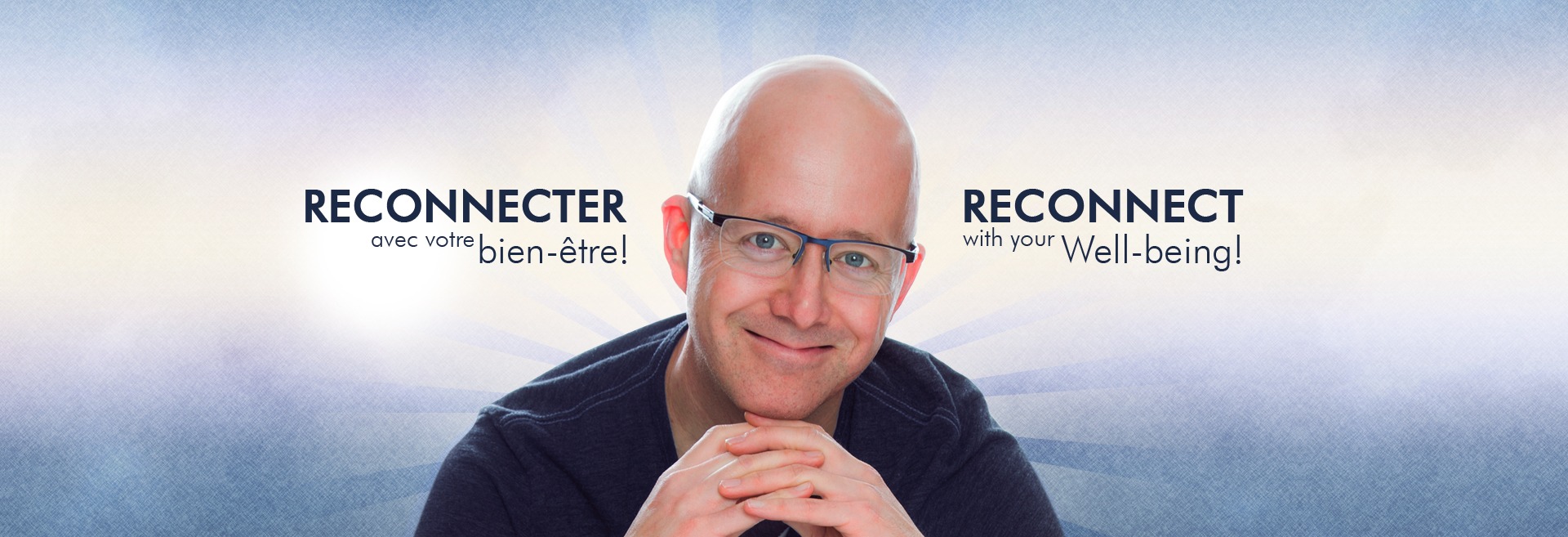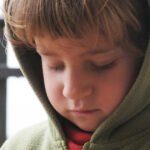
The Fear of Being Alone and the Need for Support! 😟
Of all the five great emotional wounds that occur in early childhood, abandonment is most likely the earliest to arise. These wounds (abandonment, rejection, betrayal, humiliation, injustice) are said to be great, because of all the various mental and emotional protective and overcompensating mechanisms they produce as the child grows older.
Abandonment touches on the most fundamental of needs; SAFETY! This need is nurtured through the attachment bond. Therefore, the wound of abandonment comes from an intense feeling of helplessness caused by the physical or emotional absence of mom or dad. It may be real or simply felt. And so, at the emotional level❤ , this wound will often result in the feeling of being left on his own; hence the impression of being abandoned.
The fear of losing the protective presence or bond with mom or dad can trigger this wound — Even if the child is placed in the custody of a trustworthy person (e.g. grandma). Abandonment can also come from a repeated feeling of parental disinterest; where parents pay little attention to him or his needs. It may also arise from a brief but traumatic event like getting lost in a large store. However it is caused, this wound underlies the issue of stability (support) and trust in one’s environment. This is a fundamental element in the psycho-emotional development of the child, and precursor of self-confidence and autonomy!
Attachment Bond and Brain Maturity 👶 abandonment wound
To be able to meet his needs and thrive, a child must first feel SAFE! This need underlies all others, and it is met through the attachment bond. This precious bond between mother and child develops from in utero life until around 6-7 years of age.
During this period, the maturation of the brain will take place, nurtured by the positive emotional and physical interactions with the parents (the primary caretakers). This process depends heavily on the pre-frontal lobe (front part of the brain). In that sense, the stability of the child’s environment helps the brain to mature, learn, and grow.
The more immature and/or hypersensitive the child’s brain is, the more reactive his cerebral amygdala will be. The amygdala is the part of the brain that manages the stress response. When it perceives a threat, it inhibits the learning activity of the pre-frontal lobe and puts the body on alert mode. This stress then produces another learning; fear.
This will prompt the need to be appeased; something that his brain might still have difficulty doing alone. That is why a stable parental presence and a reassuring environment is so important during the first years. The more the child will experience states of fear without being reassured, the more this will increase his propensity to experience helplessness, anxiety, and the feeling of abandonment. 😨
When Failure to Bond Becomes a Desire to Cling! 🥺
In the early years of life, it is quite normal for a child to need familiar people, routines, and points of reference to feel safe.
However, there may be times when those things are not in sufficient amounts, leading him to feel left on his own 💔 — Thus, causing him to develop the need to “cling” onto anything that can bring him safety and appeasement, even remotely.
This is the reason why the main characteristic of this wound is emotional dependency! That “velcro” side will be expressed by the propensity to be easily discouraged, and to frequently need to be reassured. They may also need their comfort zone, and tend to avoid confrontations or stressful situations. It will also result in a lower tolerance level for novelty, changes, the unforeseen, losses and grief.
In short, the child will have difficulty doing things alone, and will do everything to avoid the worst; to find himself alone or without a safety net. This wound can therefore become a real hinderance for the development of confidence, autonomy, initiative, and resilience… But also, it can significantly strain his interpersonal relationships as he grows up.
Lack of Confidence and Anxiety 😨
Self-confidence highly depends on the overall sense of safety and stability one can have. As he grows older, the biggest challenge for this wounded individual will be to feel able to do things on his own. This may cause him to constantly seek support or help around him. He may also develop a desire to help others. However, this might be motivated by the need for proximity and get help in return, rather then genuine altruism.
In addition, because being abandoned is his greatest fear, he may go to great lengths in order to avoid it. Thus, he may stay longer in a difficult relationship, an unsatisfying job, or any other painful situation. The fear of being left behind, abandoned, or even abandoning someone else, is really cumbersome.
Because the sense of safety underlies everything else, and the fear of being alone is never far away, anxiety can be recurring. Anxiety can be experienced through imagining the worst case scenarios… And be perceived as a lingering or on-and-off sadness that is difficult to identify and/or manage.
Victimhood 😭
Thus, this difficulty to be autonomous and the propensity to imagine the worst will lead this person to feel easily weak and victimized… To feel powerless in the face of situations that might make him feel alone, resourceless, or abandoned. He will therefore have a strong tendency to dramatize everything; whether they are external situations, or inner emotions. Thus, his way of getting help will come from a feeling of helplessness expressed through self-pity or victimization… Someone that needs to be taken care of!
This victimization process is often very unconscious, because the person projects his fears of being abandoned outwardly (people or situations). Also, abandonment can be akin to the wound of rejection. However, what distinguishes the two is that the rejected person will think something is wrong with them… While for the abandoned person, it is the lack of presence and support that produces that feeling of being left out. However, the two wounds tend to overlap.
The individual’s propensity to cling, and develop a certain knack for drama, may become a source of disinterest for others and lead to situations of rejection.
The Fundemental Role of the Masculine Energy 💪
Abandonment is directly related to our need for safety, governed by the root chakra. Both masculine and feminine energies are contained in each chakra. But it is through this particular chakra that our masculine energy is deployed in the body. So, when the fear of abandonment affects this energy, it will have an impact on the notion of “inner support”. This underlies the aspects of stability, inner strength, self-confidence to tackle the outside world, and maintain our well-being and survival.
Fathers that lack support or emotional presence might inflict this feeling of lacking support in their children. Once an adult, this might influence the person’s confidence in supporting herself. Not only that, but also affect her capacity or will to support his/her partner, or even start a family… Because of the pressure and the lack of inner strength that is being felt. Unfortunately, this is something that I frequently observe 🙁
When the Body Speaks 🤒
That notion of inner support can also influence what goes on in the body. A lack of muscle tone, a narrow rounded upper back, or soft fleshy parts might express that. Problems with the feet, legs, posture and bones also have a relationship to support and the family unit. The feminine energy manages the aspect of what nourrishes us. Thus, the abandonment wound can express itself in the fear of lack… Wich lack of energy, anemia, difficult stress management, weaker intestinal absorption or elimination, or chronic diseases can be manifestations of.
Also, the need for help and attention through victimization can also manifest itself through serious or rare illnesses. Or, the person may also have a tendency to use health problems to gain the attention, sympathy, or support from others.
Need or Whim? 👪
I can already hear some parents’ inner question: “Can I ‘spoil’ my child too much?” My answer: If that meets a real need, no! In fact, all children do not face the same stressors. As a result, their brain maturation, as well as their need for safety and comfort, can vary greatly. Parents need to pay attention and trust their gut feelings!
For example, a child who has had a high-risk pregnancy (where he felt mom’s worry), or a difficult delivery (traumatic for him), will come into the world with a greater need for reassurance. Or, if he is hypersensitive; the propensity to stress will be greater!
When we talk about “spoiling” a child, we are talking about making accommodations. Meaning to spare him an inconvenience or to do things for him, when he would normally be able to do so. This tends to delay his acquisition of autonomy.
A “whim” often hides a difficulty to fulfill a need autonomously, or expressing it clearly (lack of vocabulary of emotions). So, as long as you deem your child unable to meet a need on his own, it is not a whim. What you CAN do though is to gear him towards more autonomy. For an anxious child, it is best to take it step by step; by gradually widening his comfort zone.
Remember that the key to any learning is a safe and caring environment!
abandonment wound What is this Thing Clinging to my Leg?😯
If you may observe the character traits mentioned above after the age of 5, it may be a good idea to investigate the possible causes of his anxiety, in order to minimize the possible impacts on his emotional and social development.
If this happens at a younger age, don’t panic. It is quite normal for young children to experience insecurity when faced with new situations. For example; entering daycare or kindergarten are times when the attachment bond can be strained for the child. If he doesn’t feel ready 🥶, this can likely exacerbate or fuel the abandonment wound. In that case, it would be good to find ways to reduce his separation anxiety.
An important element to consider would be to ensure that you properly introduce your child to the educator/teacher. This helps the child to absorb the confidence you may have in the other caretaker. If you don’t trust, your child won’t either. If you worry, he will worry too… And you’ll be stuck with a “velcro” situation!😕
In addition, it may happen sometimes that your child seems to be regressing in his autonomy learning (for example: bedtime). Take that as a sign of anxiety that must be addressed, and not as a simple whim… This often indicate a certain stress overload that the brain and the nervous system struggle to evacuate normally.
Self Work 🧐
We all carry these five great wounds to varying degrees. For me, the wound of abandonment was a big one that has required a lot of inner work — Because of its impact on my need to hold on and the fear of lacking support.
If you recognized yourself in some parts of this text, know that you are not alone! And if you recognized your child in there, don’t be too hard on yourself! Because it may very well related to the ways your child perceives things, and not from ill intent on your part. Also, remember that you have around 18 years and more to raise your child and deprogram some wounds and behaviors!😉
When you observe that you are often accommodating your child, it may be a sign that you are trying to give your child what your inner child has lacked. Love, presence, kindness and empathy… are things that we sometimes have to relearn to give ourselves first! When we fail to do this, we often remain in doubt about what we can give our children. We then become insecure, and our children feel us… which may recreate the conditions of our own wound — Gradually transforming our doubts into guilt!😔
abandonment wound Taking Care of Yourself💝
How did I deal with this wound!? By relearning to take care of myself; in time, in priority, in benevolence, in non-judgment, etc. Coaching has undoubtedly helped me at this level, in order to better understand myself. And Reiki allowed me to reconnect with myself, my priorities, my needs, my worth, etc. In short, it thought me how to SUPPORT MYSELF! It’s a tool that has been part of my toolbelt since 2001, and I’m very grateful for it.😊
In any healing process, the key is to reconnect with ourselves and to be more attentive to our needs… To give ourselves the things that we lack, or that we need!
Be that as it may, freely accessing your heavy emotions may require time and a lot of self-empathy; things you have to hone and train for! So be kind and patient with yourself!
Also, the comfort Reiki provides really helped me to develop my capacity to look inward and be comfortable with unconfortable stuff! And so, if an extra dose of comfort and empathy if what you need, it will be my pleasure to accompany you!🙏

